…for Wilderness Emergencies in 2024
Did you know that 47% of camping injuries occur within the first day of the trip? Yikes! When you’re out in the great outdoors, far from the comforts of civilisation, knowing how to handle medical emergencies can be a real lifesaver.
That’s why camping first aid skills are absolutely crucial for any outdoor enthusiast. In this guide, we’ll dive into everything you need to know to stay safe and prepared on your wilderness adventures. Trust me, I’ve learned some of these lessons the hard way!
Why Camping First Aid Knowledge is Crucial
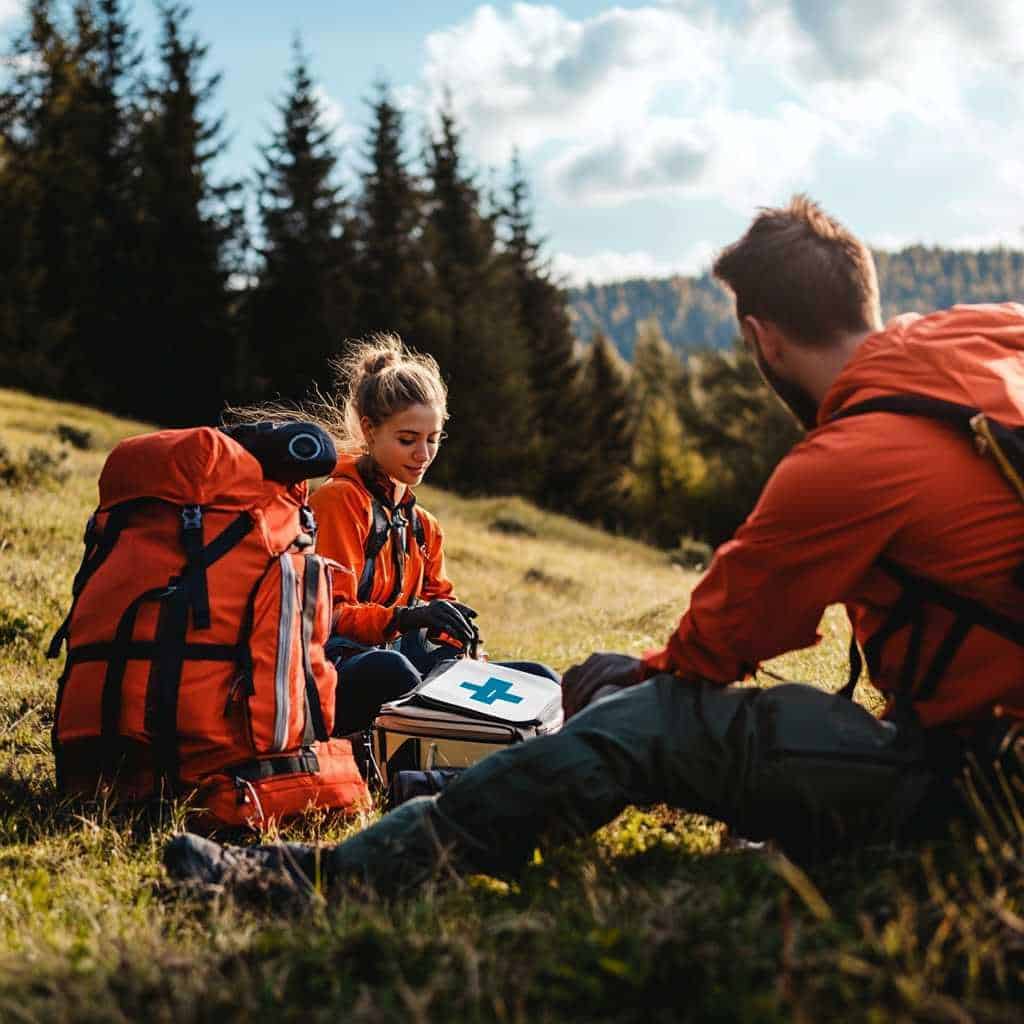
Let me tell you, there’s nothing quite like the panic that sets in when someone gets hurt miles away from the nearest hospital.
I remember a time when, on a training exercise in the foothills of Mount Kenya, my platoon sergeant sliced open his hand with a machete when cutting through undergrowth. It was a wake-up call!
Fortunately, we had the team there to evacuate him and get proper treatment, including a helicopter flight out of the rain forest. Most of us won’t be that fortunate to have that service in place.
Wilderness emergency preparedness isn’t just a nice-to-have; it’s an absolute must.
Statistics show that camping-related injuries are more common than you might think. From minor scrapes to more serious accidents, outdoor injury treatment knowledge can make a huge difference.
The unique challenges of wilderness medical situations – like limited resources and difficult evacuation – mean that your first aid skills might be the only thing standing between a minor incident and a major disaster.
It is important to consider both legal and ethical factors. While Good Samaritan laws often protect those who offer help in emergencies, it’s still important to know your limits and act responsibly.
Remember, the goal of wilderness first responder actions is to stabilise the situation until professional help can arrive.
Essential Items for Your Camping First Aid Kit
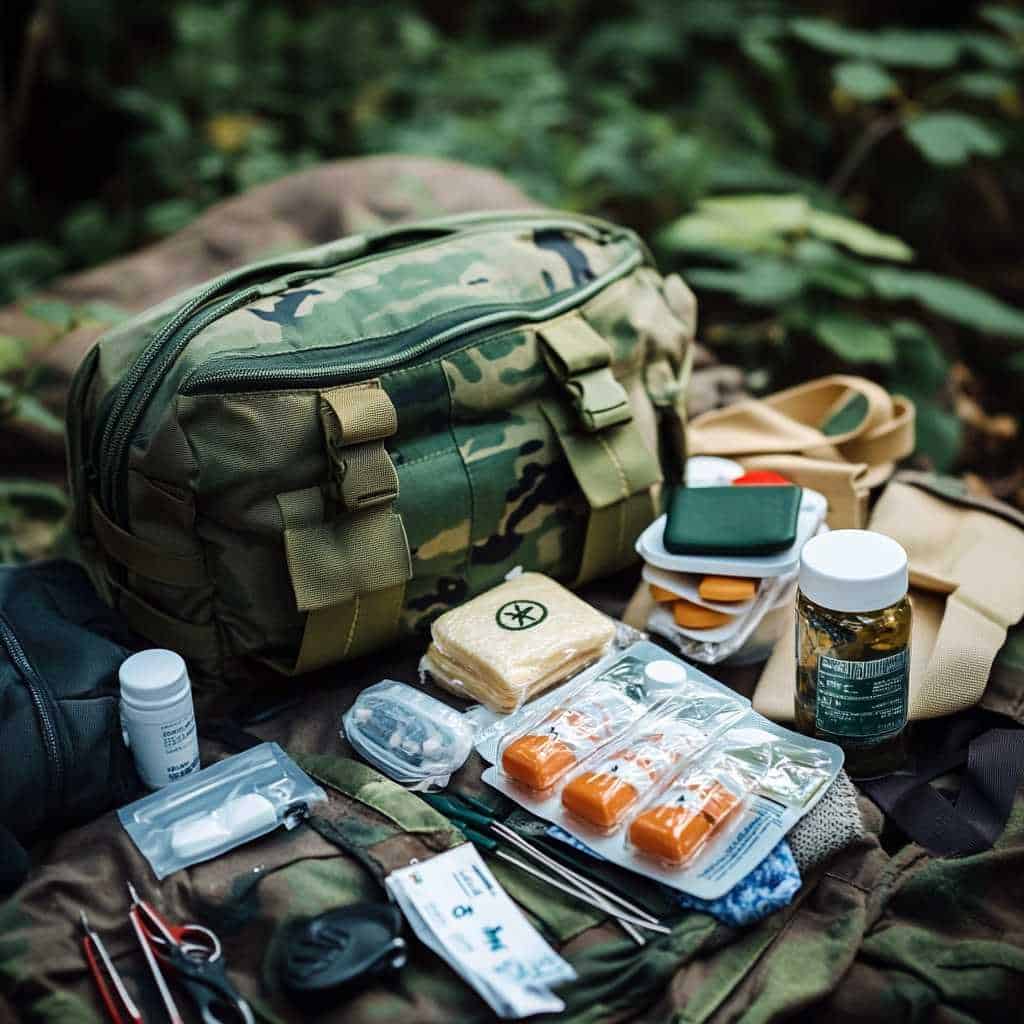
Alright, let’s talk about gearing up. A well-stocked camping medical kit is your first line of defence against the unexpected. Here’s what I always make sure to pack for minor injuries:
Basic supplies:
- Bandage 5cm, bandage 7.5cm
- Gauze swabs
- Adherent dressings
- Micropore tape
- Burn gel sachets (trust me, these are lifesavers for campfire mishaps!)
- Cleansing wipes
- Safety pins (more useful than you’d think!)
Medications:
- Pain relievers (like ibuprofen and acetaminophen)
- Antihistamines (for those pesky insect bites)
- Anti-diarrheal medication (because, well, you never know)
Tools:
- Scissors (for cutting tape or clothing in emergencies)
- Tweezers (great for removing splinters or ticks)
- Eyewash pods (for flushing out dirt or debris)
Emergency items:
- Emergency blanket (for treating shock or hypothermia)
- Torch (because emergencies don’t always happen in daylight)
- Whistle (for signalling for help)
Remember, your camping first aid kit should be tailored to your specific needs and the type of trip you’re taking. For longer or more remote adventures, you might want to add items like a SAM splint or a more comprehensive medication selection.
Treating Common Camping Injuries
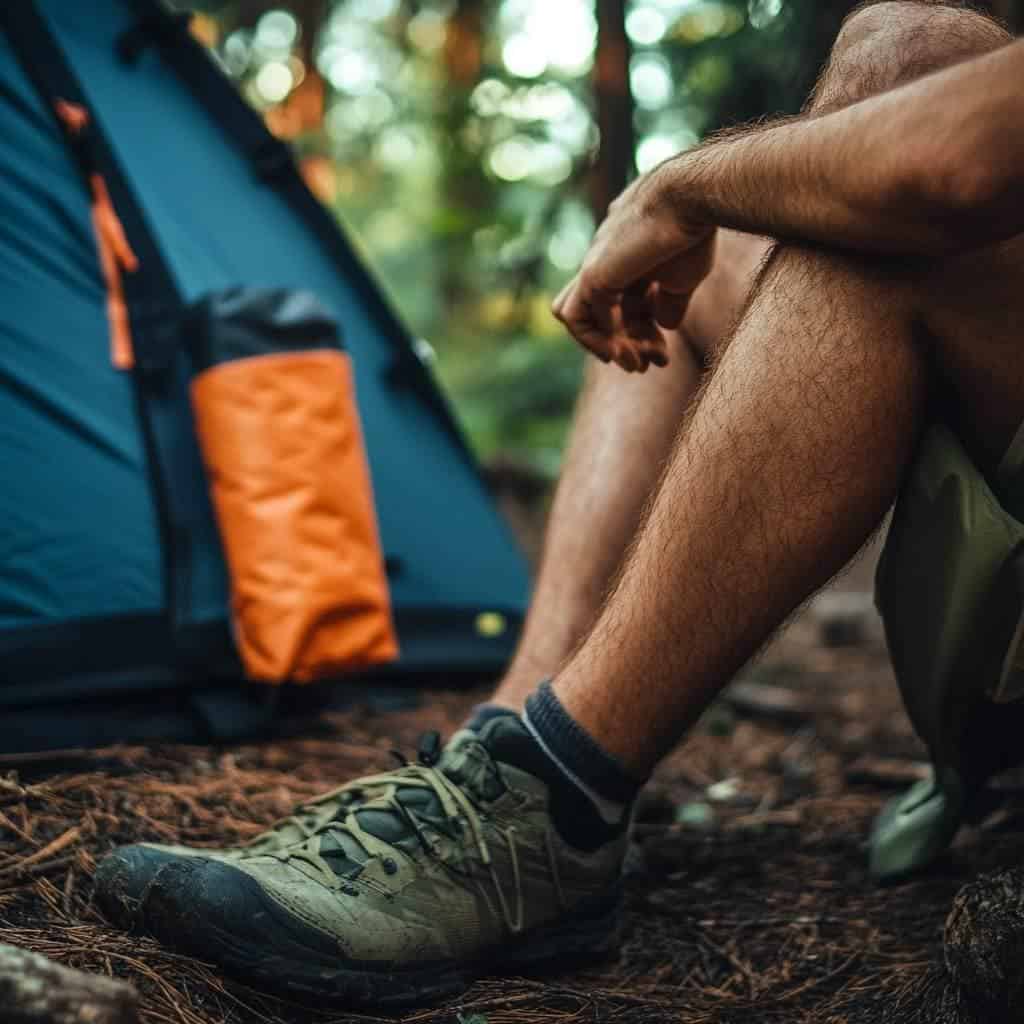
Okay, let’s get into the nitty-gritty of outdoor wound care. Most camping injuries are minor, but knowing how to handle them properly can prevent complications down the trail.
Cuts and scrapes:
- Clean the wound thoroughly with clean water or antiseptic wipes.
- Apply an adherent dressing or bandage, depending on the size of the wound.
- Change the dressing daily, or if it gets wet or dirty.
Burns (including sunburn):
- Cool the burn with clean, cool water for at least 10 minutes.
- Apply a burn gel sachet to soothe the pain and protect the burn.
- Cover with a non-stick dressing.
Sprains and strains:
- Remember RICE: Rest, Ice, Compression, Elevation.
- Use a 5cm or 7.5cm bandage for compression, depending on the affected area.
- Encourage rest and avoid putting weight on the injury.
Insect bites and stings:
- Remove the stinger if present (scrape, don’t squeeze!).
- Clean the area and apply a cold compress.
- Use antihistamine cream or medication if swelling occurs.
Dealing with Severe Outdoor Emergencies
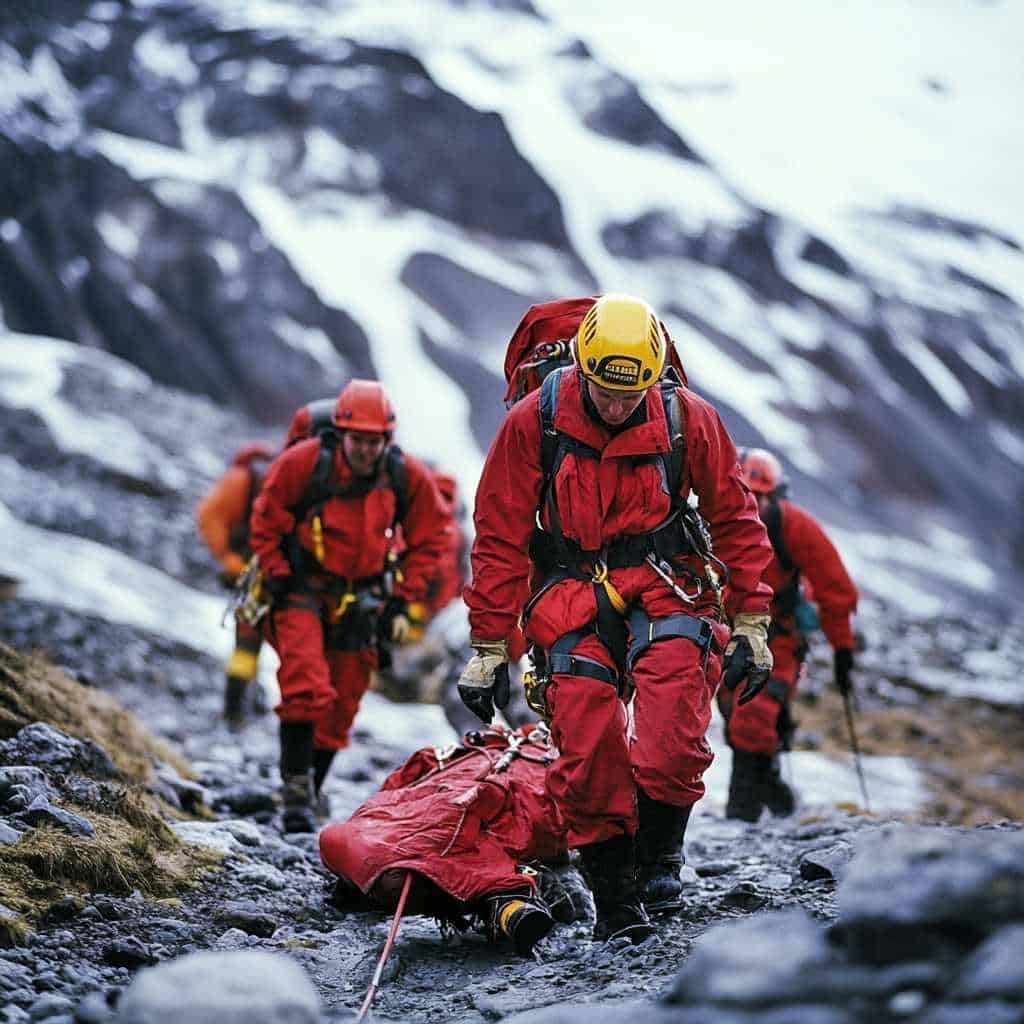
Sometimes, despite our best efforts, serious situations arise. Here’s how to handle some of the more severe emergencies you might encounter:
Fractures and dislocations:
- Immobilise the injured area using whatever you have on hand (sticks, trekking poles, etc.)
- Apply cold packs to reduce swelling
- Seek professional medical help ASAP
Hypothermia and heat exhaustion:
- For hypothermia: Remove wet clothing, warm the person gradually, and provide warm drinks if conscious
- For heat exhaustion: Move to a cool area, provide water, and use cool compresses
Allergic reactions and anaphylaxis:
- Administer antihistamines for mild reactions
- For severe reactions, use an EpiPen if available and seek immediate medical attention
Snake bites:
- Keep the victim calm and immobilise the affected limb
- Do NOT attempt to suck out the venom or apply a tourniquet
- Seek medical help immediately
Wilderness First Aid Techniques
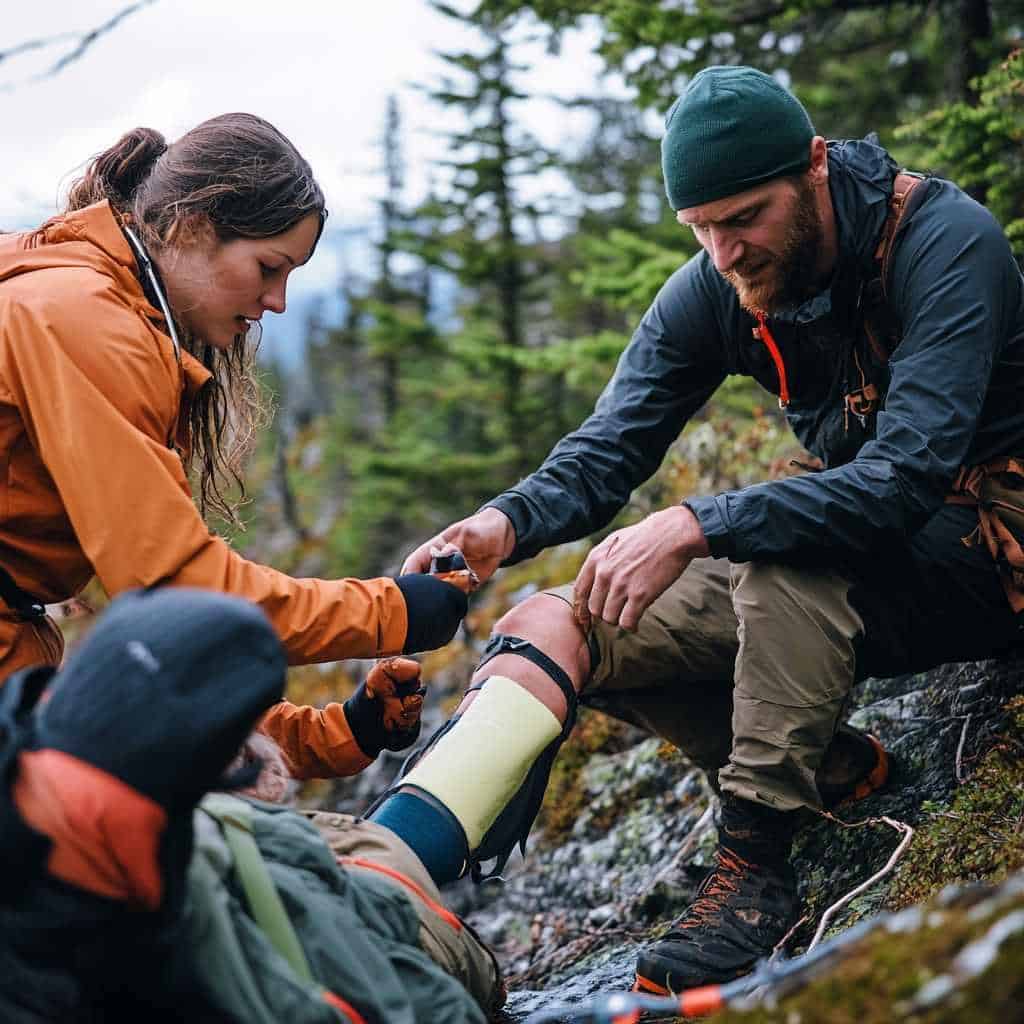
When you’re miles from nowhere, you’ve got to get creative with your first aid techniques. Here are some wilderness-specific skills that could save a life:
The RICE method for injuries:
- Rest: Stop using the injured area
- Ice: Apply cold packs or snow wrapped in cloth
- Compression: Use bandages to reduce swelling
- Elevation: Raise the injured area above the heart if possible
Improvising splints and slings:
- Use sticks, trekking poles, or rolled-up sleeping pads as splints
- Create slings from bandannas, t-shirts, or backpack straps
Proper wound cleaning in the backcountry:
- Use the cleanest water available, boiled if possible
- Irrigate the wound thoroughly to remove debris
- Pat dry and cover with a sterile dressing
Recognising signs of shock:
- Pale, cool, clammy skin
- Rapid breathing and pulse
- Weakness or fainting
- Treat by laying the person down, elevating their legs, and keeping them warm
Preventive Measures for a Safe Camping Trip
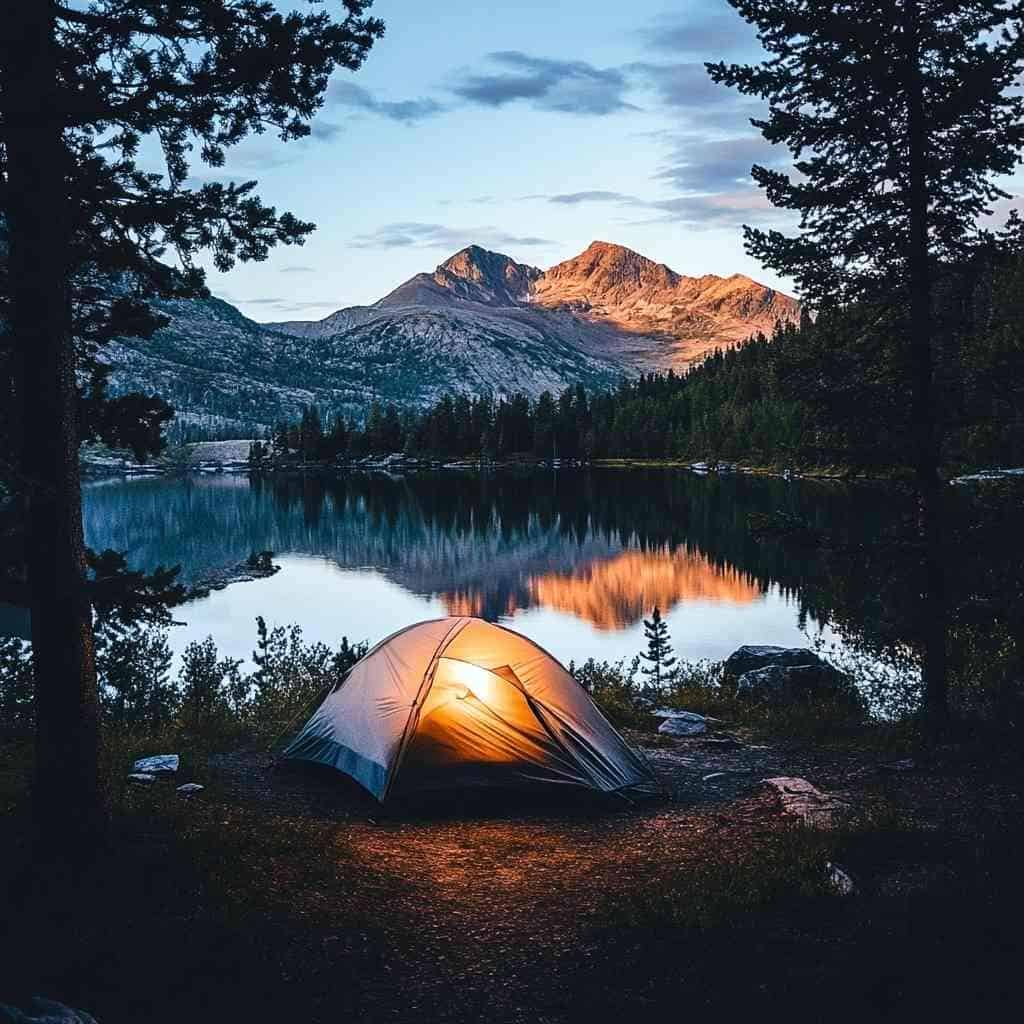
It’s better to prevent a problem than to try to fix it, especially when in the wilderness. Here are some tips to keep your adventure safe and enjoyable:
Pre-trip planning and risk assessment:
- Research your destination and potential risks
- Check weather forecasts and pack accordingly
- Inform someone of your plans and expected return
Proper gear and clothing choices:
- Wear appropriate footwear to prevent sprains and blisters
- Layer clothing for temperature regulation
- Don’t forget sun protection (hat, sunscreen, sunglasses)
Campsite selection and setup safety:
- Choose a site away from potential dangers (dead trees, flash flood areas)
- Store food properly to avoid wildlife encounters
- Set up tents and gear securely
Food and water safety in the wilderness:
- Purify all water before drinking (use filters, tablets, or boiling)
- Cook food thoroughly and store it properly
- Practice good hygiene, especially when preparing food
First Aid Training and Certification for Campers
I can’t stress this enough – taking a wilderness first aid course is one of the best things you can do to prepare for outdoor adventures. These courses go beyond basic first aid, focusing on the unique challenges of remote environments.
Types of wilderness first aid courses available:
- Wilderness First Aid (usually a 2 to 3-day course)
- Wilderness First Responder (more comprehensive, often 7-10 days)
- Wilderness EMT (for those looking for professional-level training)
Benefits of getting certified:
- Hands-on practice with wilderness-specific situations
- Learn to improvise with limited resources
- Gain confidence in your ability to handle emergencies
Where to find reputable training programmes:
- NOLS (National Outdoor Leadership School)
- REI
- American Red Cross
- Local outdoor education centres
Remember to keep your skills up-to-date by taking refresher courses every couple of years. First aid protocols can change, and regular practice keeps your skills sharp.
In conclusion, camping first aid knowledge is an essential skill for any outdoor enthusiast. By being prepared with the right supplies, knowledge, and training, you can enjoy your wilderness adventures with confidence and peace of mind. Remember, the best first aid is prevention, so always prioritise safety in your outdoor planning. Now, get out there and explore – but don’t forget your first aid kit!
Have you had any memorable first aid experiences on your camping trips? Share your stories or tips in the comments below – your insight could help fellow adventurers stay safe out there!
Frequently Asked Questions: Your Camping First Aid Queries Answered!
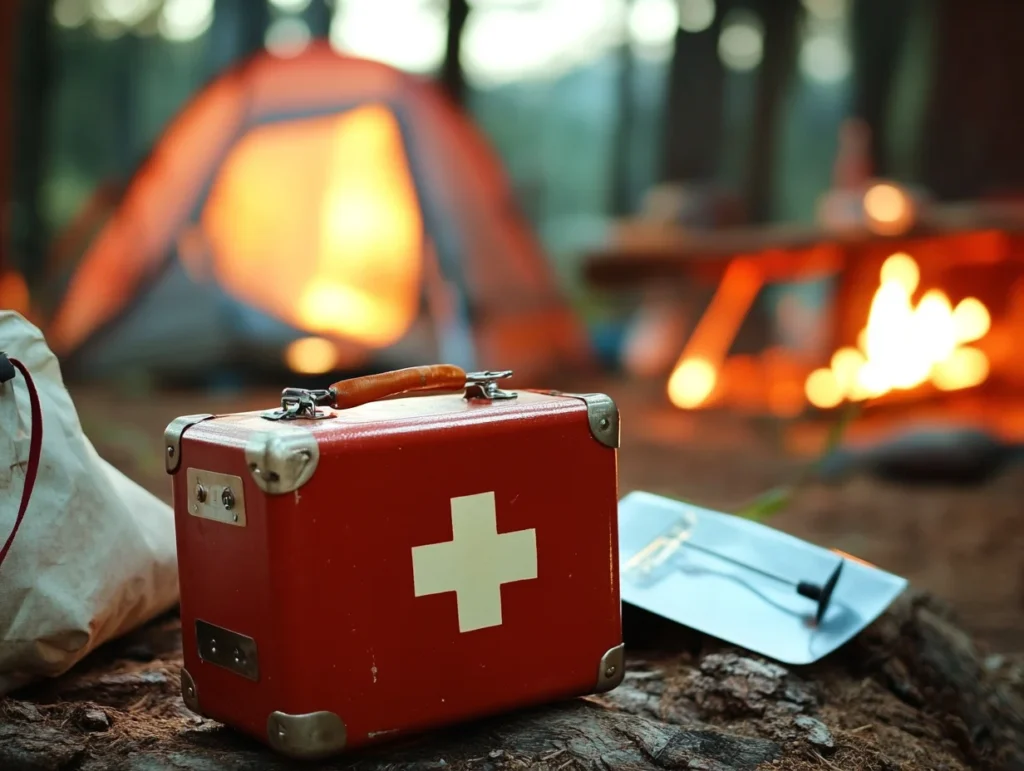
What is the first aid for camping?
First aid for camping is all about being prepared for wilderness emergencies. It includes having the right supplies, knowledge of basic medical procedures, and the ability to improvise with limited resources. Think of it as your safety net when you’re miles from the nearest hospital!
What should be in a first aid tent?
A first aid tent isn’t just about band-aids, folks! You’ll want to stock it with essentials like bandages, antiseptic wipes, burn gel sachets, pain relievers, and tools like scissors and tweezers. Don’t forget a good first aid manual – your memory might need a refresher when the pressure’s on!
What medicines to take on camp?
Pack smart, not heavy! Essential meds for camping include:
- Pain relievers (ibuprofen and acetaminophen),
- Antihistamines for allergies,
- Anti-diarrheal medication,
- And any personal prescriptions.
Consider adding electrolyte packets and altitude sickness pills if you’re heading to the mountains.
What is in a hiking first aid kit?
A hiking first aid kit is like a mini emergency room in your backpack! Include bandages, gauze, antiseptic wipes, blister treatments, pain relievers, and a multi-tool. Don’t forget emergency items like a whistle and a space blanket – they could be lifesavers if you get lost!
What is the first rule of camping?
The first rule of camping? Be prepared! It’s not just a scout’s motto; it’s the golden rule of the wilderness. Know your environment, have the right gear, and always let someone know where you’re going. Remember, Mother Nature doesn’t care if you forgot your rain jacket!
What are 5 things that should be in a first aid kit?
If I had to choose just five things, I’d say: adhesive bandages, antiseptic wipes, pain relievers, tweezers, and an emergency blanket. With these, you can handle most minor emergencies and even some major ones in a pinch!
What are the 10 items in an emergency kit?
Alright, let’s expand that list a bit. In an emergency kit, you should have: water, non-perishable food, flashlight, radio, extra batteries, first aid kit, whistle, dust mask, plastic sheeting, and duct tape (for shelter); and moist towelettes. It’s like preparing for a zombie apocalypse, minus the zombies!
Can you get free first aid kits?
Free first aid kits? They’re not as common as free samples at the grocery store, but they do exist! Some organisations offer them during safety awareness events. You can also check with your local Red Cross or community health centre. But remember, a good kit is worth investing in – your safety is priceless!
What are the 10 items in a first aid kit?
Here’s my top 10 for a solid first aid kit: adhesive bandages, gauze pads, adhesive tape, scissors, tweezers, safety pins, antiseptic wipes, antibiotic ointment, pain relievers, and an emergency blanket. It’s like a greatest hits album for minor injuries!
How do you not get sick at camp?
Staying healthy at camp is all about prevention! Wash your hands frequently; purify all water before drinking, cook food thoroughly, and get enough rest. And please, don’t be the person who thinks the 5-second rule applies to dropping food in the dirt!
What should I pack when going camping?
Packing for camping is an art form! Besides your tent and sleeping bag, don’t forget essentials like a first aid kit, map and compass, multi-tool, fire starter, extra food, and water, warm clothing, rain gear, and a headlamp. Oh, and leave the “optional” 50-pound dumbbell at home – trust me on this one!
How do you take medication when camping?
Taking meds while camping requires a bit of planning. Keep them in a waterproof container, clearly labelled. Set reminders if needed, and always bring a bit extra in case your trip runs long. And remember, sharing is caring, but not when it comes to prescription meds!
How to make a first aid kit for camping?
Creating a camping first aid kit is like making a mixtape – it should be personalised! Start with the basics: bandages, gauze, antiseptic wipes, and pain relievers. Then add items specific to your needs and destination. Don’t forget a first aid manual – it’s the liner notes to your medical mixtape!
What is in the ultimate first aid kit?
The ultimate first aid kit? It’s like the Swiss Army knife of medical supplies! Include all the basics, plus items like a SAM splint, trauma shears, irrigation syringe, and a variety of medications. Add a satellite communicator for remote areas, and you’re ready for almost anything!
What is a first aid tent?
A first aid tent is your wilderness ER! It’s a designated area in your campsite for storing medical supplies and treating injuries. It doesn’t have to be fancy – even a tarp set up as a shelter can work. The key is to keep it clean, organised, and easily accessible.
What are the hygiene essentials for camping?
Camping hygiene essentials include biodegradable soap, hand sanitiser, toilet paper, wet wipes, and a trowel (for digging cat holes). Remember, Leave No Trace principles apply to personal hygiene, too. No one wants to find your used TP on the trail!
What basics do you need to go camping?
Camping basics include shelter (tent or hammock), sleeping bag, sleeping pad, food, water, cooking equipment, lighting, and appropriate clothing. Don’t forget navigation tools, a first aid kit, and a positive attitude. The last one doesn’t take up any pack space but makes a world of difference!
What are the first aid techniques needed in hiking?
Essential first aid techniques for hiking include wound cleaning and dressing, blister care, splinting for sprains or fractures, and recognising signs of heat exhaustion or hypothermia. Knowing how to signal for help and basic CPR are also crucial. It’s like being a Boy Scout, but with better views!
What is a first aid tent?
We covered this earlier, but it’s worth repeating! A first aid tent is your designated medical area at camp. It’s where you store your supplies and treat injuries. Keep it clean, organised, and easily accessible. Think of it as your campsite’s mini-hospital, minus the terrible cafeteria food!

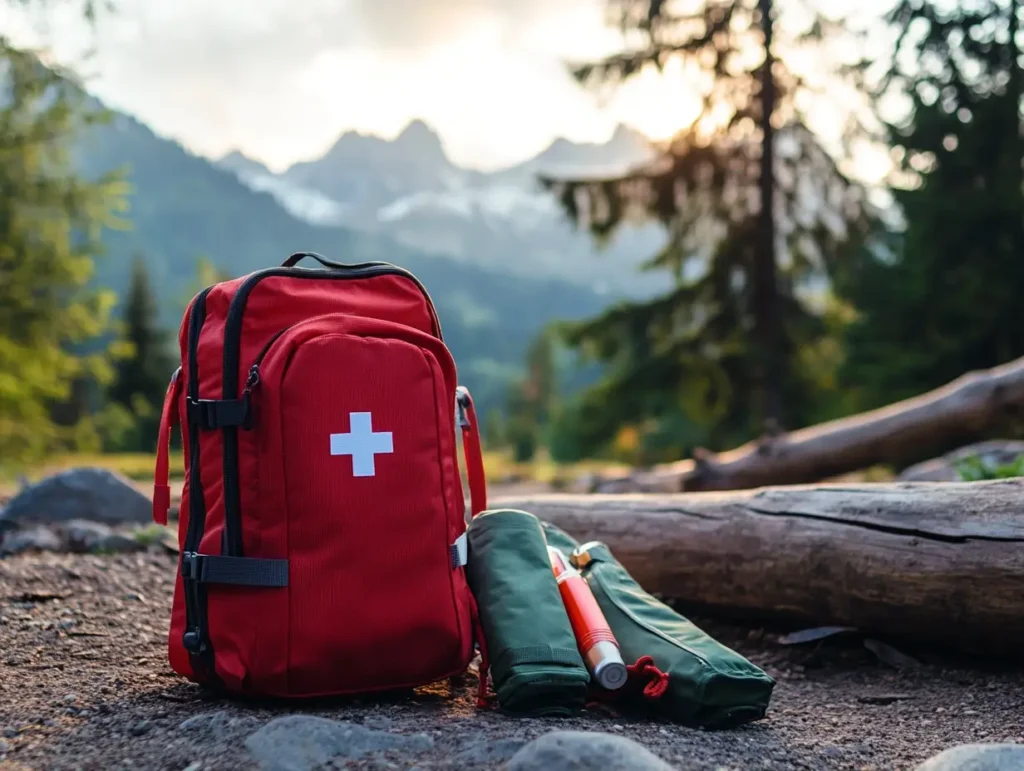
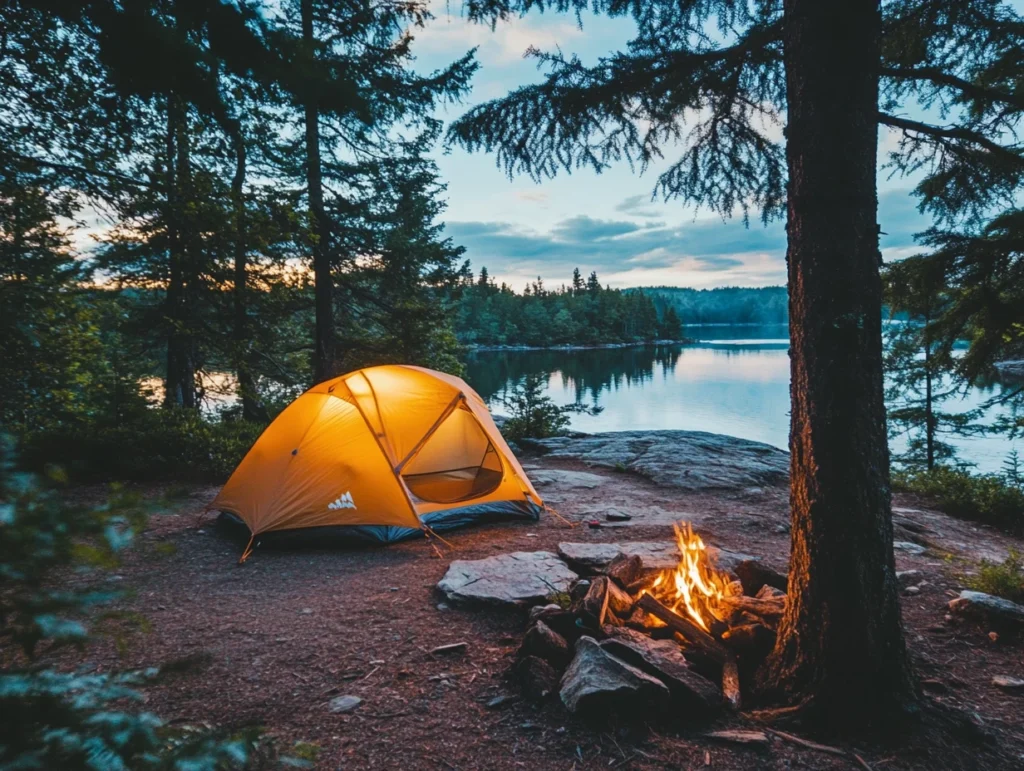
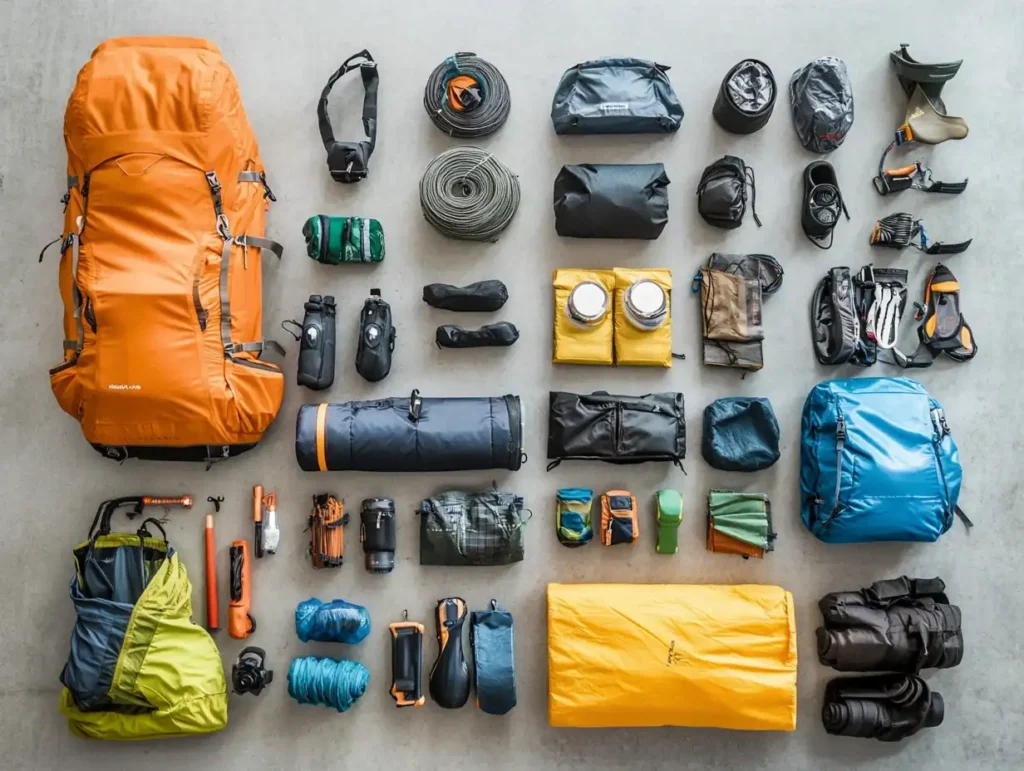
Pingback: 15 Essential Family Camping Tips [2024] | WB Hawkins
Pingback: Complete Solo Camping Guide [2024] | WBHawkins